- Clone
- C1.7 (See other available formats)
- Regulatory Status
- RUO
- Workshop
- VII 70350
- Other Names
- 2B4, SLAMF4
- Isotype
- Mouse IgG1, κ
- Ave. Rating
- Submit a Review
- Product Citations
- publications
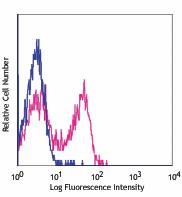
-

Human peripheral blood lymphocytes stained with purified C1.7, followed by anti-mouse IgG FITC
| Cat # | Size | Price | Quantity Check Availability | Save | ||
|---|---|---|---|---|---|---|
| 329502 | 100 µg | £77 | ||||
CD244, known as 2B4, is a 38 kD type I transmembrane protein. It is a member of the CD2 subset of the immunoglobulin superfamily (IgSF) molecules. CD244 is expressed on NK cells, a subset of T cells (including most CD8+ T cells and γ/δ T cells), monocytes, basophils, and eosinophils. CD48 is the ligand of CD244. It has been reported that ligation of human CD244 results in enhanced NK cell cytotoxicity and cytokine production. Recent studies have shown that human CD244, like murine CD244, has both activating and inhibitory functions, which are dependent on the density of surface 2B4 expression, degree of ligation, and the level of the adaptor molecule SAP expression.
Product DetailsProduct Details
- Verified Reactivity
- Human
- Antibody Type
- Monoclonal
- Host Species
- Mouse
- Formulation
- Phosphate-buffered solution, pH 7.2, containing 0.09% sodium azide.
- Preparation
- The antibody was purified by affinity chromatography.
- Concentration
- 0.5 mg/ml
- Storage & Handling
- The antibody solution should be stored undiluted between 2°C and 8°C.
- Application
-
FC - Quality tested
WB - Reported in the literature, not verified in house - Recommended Usage
-
Each lot of this antibody is quality control tested by immunofluorescent staining with flow cytometric analysis. For flow cytometric staining, the suggested use of this reagent is ≤0.5 µg per million cells in 100 µl volume. It is recommended that the reagent be titrated for optimal performance for each application.
- Application Notes
-
Additional reported applications (for the relevant formats) include: inducing cytokine production by NK cells, enhancing NK cytotoxicity, and Western blotting.
-
Application References
(PubMed link indicates BioLegend citation) - Product Citations
-
- RRID
-
AB_1279194 (BioLegend Cat. No. 329502)
Antigen Details
- Structure
- 38 kD type I transmembrane protein, CD2 family member, Ig superfamily
- Distribution
-
NK, T subset, monocytes, basophils, and eosinophils
- Function
- Activation and inhibition of NK cell function
- Ligand/Receptor
- CD48
- Cell Type
- Basophils, Eosinophils, Monocytes, NK cells, T cells
- Biology Area
- Immunology
- Molecular Family
- CD Molecules
- Antigen References
-
1. Lee KM, et al. 2003. J. Immunol. 170:4881.
2. Chlewicki LK, et al. 2008. J. Immunol. 180:8159.
3. Messmer B, et al. 2006. J. Immunol. 176:4646.
4. Boles KS, et al. 2001. Immunol. Rev. 181:234. - Gene ID
- 51744 View all products for this Gene ID
- UniProt
- View information about CD244 on UniProt.org
Related Pages & Pathways
Pages
Related FAQs
Other Formats
View All CD244 Reagents Request Custom ConjugationCustomers Also Purchased
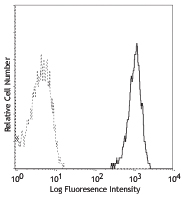


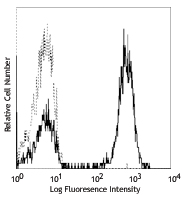
Compare Data Across All Formats
This data display is provided for general comparisons between formats.
Your actual data may vary due to variations in samples, target cells, instruments and their settings, staining conditions, and other factors.
If you need assistance with selecting the best format contact our expert technical support team.
-
Purified anti-human CD244 (2B4)
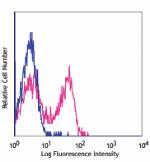
Human peripheral blood lymphocytes stained with purified C1.... -
Biotin anti-human CD244 (2B4)
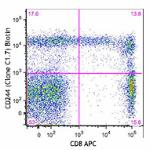
Human peripheral blood lymphocytes were stained with CD8 APC... 
-
FITC anti-human CD244 (2B4)
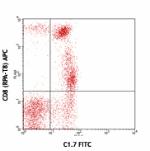
Human peripheral blood lymphocytes stained with CD8 (RPA-T8)... -
PE anti-human CD244 (2B4)
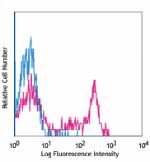
Human peripheral blood lymphocytes stained with C1.7 PE -
Alexa Fluor® 647 anti-human CD244 (2B4)
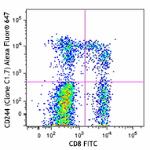
Human peripheral blood lymphocytes were stained with CD8 FIT... 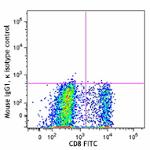
-
APC anti-human CD244 (2B4)
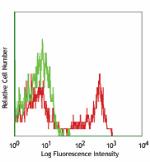
Human peripheral blood lymphocytes stained with C1.7 APC -
PerCP/Cyanine5.5 anti-human CD244 (2B4)

Human peripheral lymphocytes were stained with CD8 FITC, and... -
APC/Cyanine7 anti-human CD244 (2B4)

Human peripheral blood lymphocytes were stained with CD8 FIT... -
PE/Cyanine7 anti-human CD244 (2B4)

Human peripheral blood lymphocytes were stained with CD8 FIT... -
PE/Dazzle™ 594 anti-human CD244 (2B4)
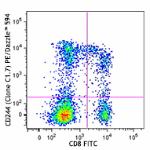
Human peripheral blood lymphocytes were stained with CD8 FIT... 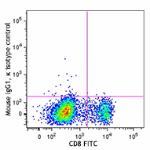
-
Pacific Blue™ anti-human CD244 (2B4)
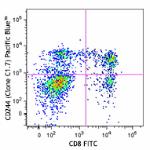
Human peripheral lymphocytes were stained with CD8 FITC, and... 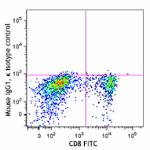
-
Alexa Fluor® 700 anti-human CD244 (2B4)
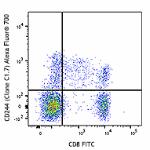
Human peripheral blood lymphocytes were stained with CD8 FIT... 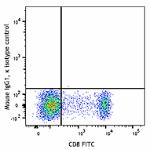
-
TotalSeq™-A0189 anti-human CD244 (2B4)
-
TotalSeq™-C0189 anti-human CD244 (2B4)
-
Brilliant Violet 421™ anti-human CD244 (2B4)

Human peripheral blood lymphocytes were stained with CD8 APC... -
Brilliant Violet 510™ anti-human CD244 (2B4)

Human peripheral blood lymphocytes were stained with CD8a AP... -
Brilliant Violet 605™ anti-human CD244 (2B4)

Human peripheral blood lymphocytes were stained with CD8a AP... -
TotalSeq™-B0189 anti-human CD244 (2B4)
-
PE/Cyanine5 anti-human CD244 (2B4)

Human peripheral blood lymphocytes were stained with CD8 FIT... -
TotalSeq™-D0189 anti-human CD244 (2B4)
-
PE/Fire™ 700 anti-human CD244 (2B4)

Human peripheral blood lymphocytes were stained with anti-hu... -
Spark Blue™ 550 anti-human CD244 (2B4) (Flexi-Fluor™)
 Login / Register
Login / Register 








Follow Us